The monastery is one of the 100 national tourist sites under № 22.
The Dryanovo Monastery has been defending against the misfortunes for nine centuries. It had been demolished and burnt three times and also three times the patriotic Christians reconstructed it to continue its function of a fortress for the Bulgarian spirit. The fabulous monastery gorge has an ancient history. The first people settled it during the prehistoric epochs. They lived in the caves of the "Boruna" massif and in the cavities of the "Polichkite"rock chain. The monastery was founded during the rule of King Kaloyan, after moving the relics of Saint Michael Voyn from Potuka to Tarnovgrad (1197-1207 ). The procession spent the night near Dryanovska river and in accordance with the Christian canon a monastery was built at the holy place. It was firstly disposed at 2 km northern from the present place, in the place of " The Small Saint Archangel", opposite the cave "Andaka". During 14th century the monastery complex became one of the general centres of the isihast monks, that caused the need of a new enlargement. But in the awful year 1393 the Ottomans besieged the town of Tarnovo and swept all on their way and they did not give a mercy to the monastery burning it to its foundations. In 16th century the patriotic Bulgarians from the region reconstructed again the sacred building. That time they chose another place for it – " The Big Saint Archangel Michael" on the opposite bank of the river, but the fate of this temple is the same as the previous one. Once more the Dryanovo monastery was built at the place where it is located now till the end of 17th century. The church was single-naved and semi-planted in the earth, and it situated next to the present one, and except it there was a second temple. Gradually the monastery took again its own place in the cultural and clerical life in the Bulgarian territory. There is a huge library in it. The monastery became one of the biggest centers of literature during The National Revival. A transcript from The Hilendarski Monastery in Aton shows that there were around 500 monks in the monastery in that period. Its glory was spread all around the Balkan peninsula, but the violent groups of kardjalii (violent bandit groups of Ottomans) burnt it for third time. The embers had not been still dead and the people from the region began rebuilding it again. The progress and the prosperity of the monastery started during the time of priest Raphail – an abbot of the monastery, who undertook a renovation of the sacred temple in 40s of 19th century. A housing ensemble was built parallelly with the river, and the new temple was completed in 1845. So that the monastery had two churches and five additional buildings yet. The literary activities of the monks continued. That time the abbot of the monastery was changed, the new one was yieromonah (a clerical title) Pahomiy Stoyanov, who continued the deed of his predecessor and also was involved in the preparation of the April Revolt. He together with Vasil Levski, Matey Preobrajenski – Mitkaloto and the Dryanovo revolt committee established a solid base for the reinforcement of the battle groups which were disposed in the Northern Bulgaria. Storehouses were built in need of gathering food and weapons for the warriors. On 29 April 1876 the battle group of Pop Hariton and Bacho Kiro came in the monastery – the first revolting group for Tarnovo region and Bulgaria. But the Turkish militaries observed and besieged them. The heroic defence between the 195 Bulgarian warriors and the 5000 military Turkish army continued nine days. 47 from the warriors succeeded to escape, the rest found their death there. The monastery was completely demolished, and the church was semi-destroyed. The whole monastery library was burnt. The destroyed and burnt monastery was partially reconstructed on 3 April1877 when the holly place was ceremonially consecrated. The abbot Pahomiy Stoyanov held the first memorial service for the killed revolutionaries. The temple had not wall-paintings, with a leaky by a Turkish gun chalice, with a plenty of holes on the walls by the Ottoman enemy, which were deliberately left to remind for the past and for the Bulgarian sufferance. In the place of the small church was built a charnel-house with a statue of a revolutionary. Gradually till the end of the century the Dryanovo monastery became a religious and cultural center and one of the biggest and well-constructed sacred places in the Tarnovo region. The present monastery is one of the tenth most preferred sanctuaries for The Bulgarian Orthodox Church, a national cultural monument and a point of many tourist routes. The temple official ceremony day is 8 October.
Община
Туризъм

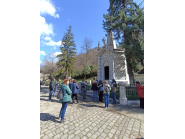
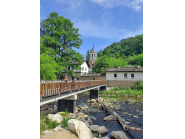
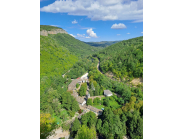
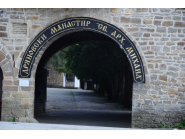
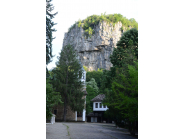
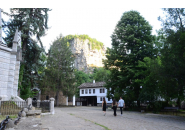
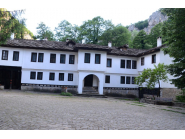
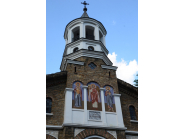
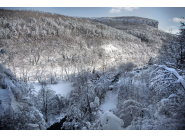
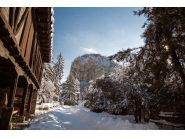
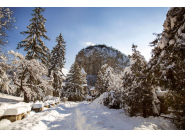
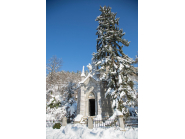
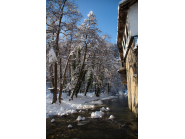
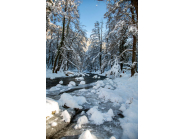
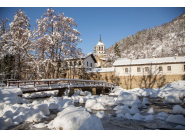
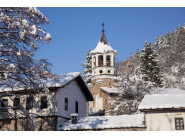
 Достъп за глухи лица
Достъп за глухи лица